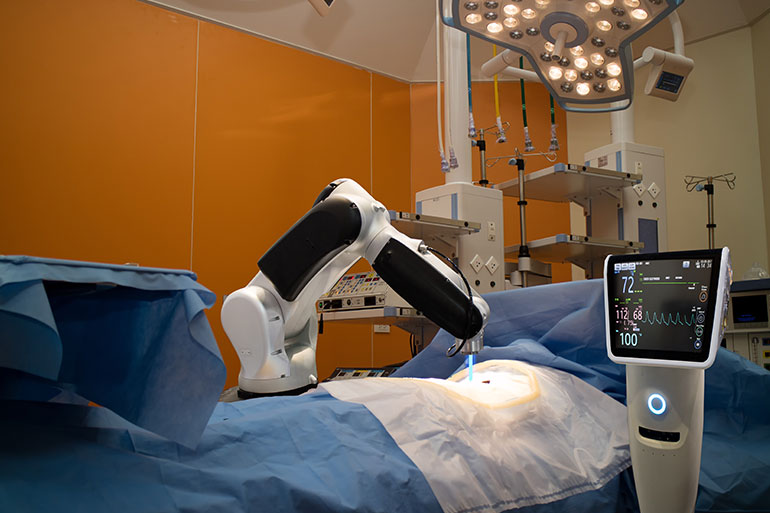
AI Revolutionizes Medical Diagnosis with Precision and EfficiencyAI Revolutionizes Medical Diagnosis with Precision and Efficiency Artificial intelligence (AI) is transforming the medical landscape, revolutionizing the way healthcare professionals diagnose and treat diseases. With its ability to process vast amounts of data, identify patterns, and make predictions, AI is empowering clinicians to achieve greater precision and efficiency in diagnosis, improving patient outcomes and reducing healthcare costs. Precision Diagnostics One of the most significant contributions of AI to medical diagnosis is its ability to provide more precise diagnoses. By leveraging machine learning algorithms, AI can analyze patient data from multiple sources, including electronic health records, imaging studies, and genetic profiles. This data provides a comprehensive view of the patient’s health, enabling AI to detect subtle patterns and identify diseases that may have been missed by traditional methods. For example, AI algorithms have been developed to detect early signs of diabetic retinopathy, a leading cause of blindness. By analyzing retinal images, these algorithms can identify tiny changes in blood vessels that are often invisible to the human eye. This early detection allows for prompt treatment, preventing irreversible vision loss. Automated Analysis AI is also automating the analysis of medical images, such as X-rays, CT scans, and MRIs. Traditionally, radiologists have spent hours manually interpreting these images to identify abnormalities. However, AI algorithms can now perform this task quickly and accurately, freeing up radiologists to focus on more complex cases. AI-powered image analysis tools have proven particularly effective in detecting subtle changes in cancer tumors. By comparing successive scans, these algorithms can identify growth or shrinkage, which can help clinicians make more informed decisions about patient management. Efficiency Enhancement In addition to improving precision, AI is also enhancing the efficiency of medical diagnosis. AI algorithms can quickly sift through large amounts of data to identify potential diagnoses, allowing clinicians to narrow down their differential diagnosis more efficiently. This can save time and reduce the need for unnecessary testing. Furthermore, AI-powered systems can automate the generation of diagnostic reports, freeing up clinicians to spend more time with patients and focus on providing personalized care. Improved Outcomes and Reduced Costs The use of AI in medical diagnosis has led to improved patient outcomes and reduced healthcare costs. More precise diagnoses mean that patients can receive appropriate treatment sooner, leading to better health outcomes. Additionally, early detection of diseases can prevent complications and the need for costly interventions. By automating time-consuming tasks, AI also frees up healthcare professionals to spend more time on patient care, improving the quality of service and reducing the risk of burnout. Challenges and Opportunities While AI offers immense potential in medical diagnosis, it also presents challenges. Ensuring data privacy and security, addressing potential biases, and integrating AI into existing healthcare systems are among the key concerns that need to be addressed. However, the opportunities outweigh the challenges. As AI continues to advance, its impact on medical diagnosis will only grow. By leveraging the power of AI, we can create a more precise, efficient, and equitable healthcare system that improves the lives of countless individuals around the world.
Posted inNews